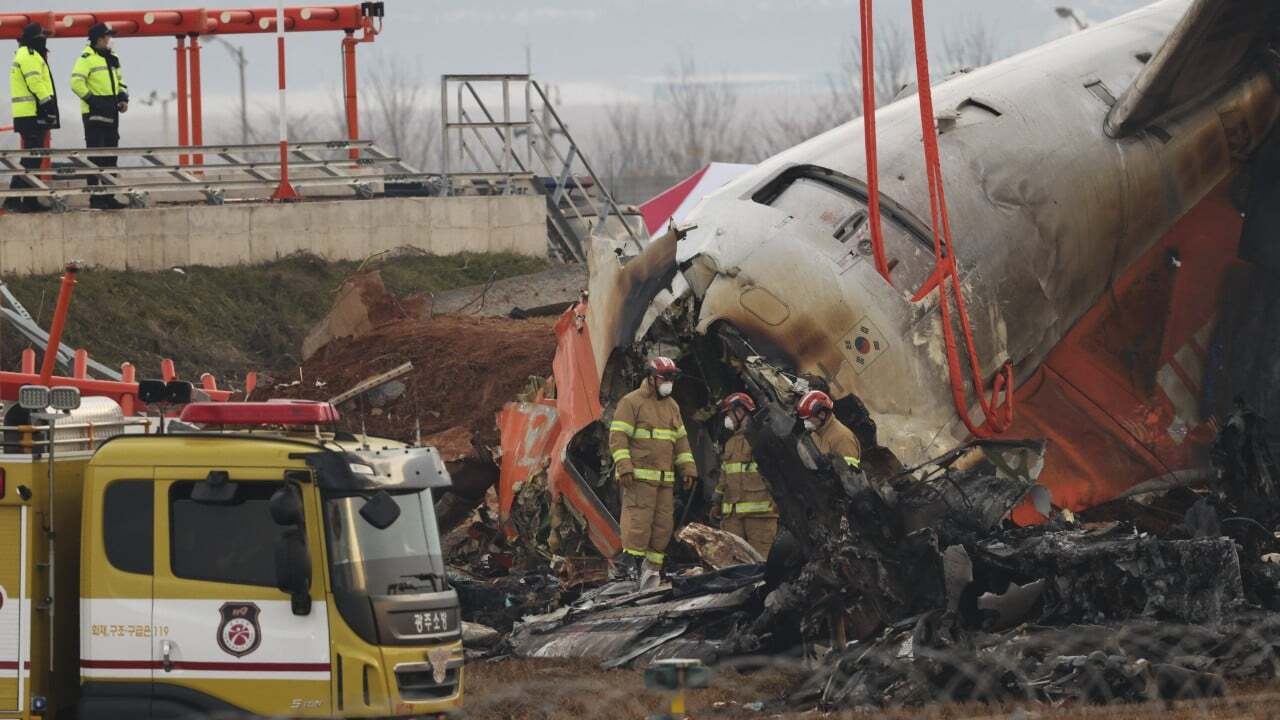Published: 12:47pm, 30 Dec 2024Updated: 4:08pm, 30 Dec 2024
As South Korea mourns the 179 victims of its worst-ever air disaster, aviation experts are questioning the existence beyond the runway of a wall or “dune” that Jeju Air flight 7C2216 crashed into and exploded after landing without wheels.
Advertisement
Two flight attendants were the only survivors among the 181 people aboard the flight, which was travelling from Bangkok when it crash-landed at South Korea’s Muan International Airport on Sunday.
Experts argue that the existence of a solid structure near the end of the runway to contain an aircraft guidance system contributed to the mishap. Others suggested the pilots had little time to perform standard emergency landing procedures due to a sudden loss of power in both engines from a bird strike.
David Learmont, aviation expert, said on Sky News TV that the failure to properly deploy landing gear was actually not what had killed the passengers.
“The passengers were killed by hitting a solid structure just over the end of the runway where a solid structure should not be,” he argued.
The earth and concrete structure, which was set up 251 metres off the runway’s end, contains antennae for the Instrument Landing System, which guides aircraft in bad weather.
Advertisement
Learmont said such equipment was normally secured to the ground and collapsible in case of any aircraft overshooting the runway and going over them. “But we can see the aircraft running into this structure and just crumpling and exploding.”


